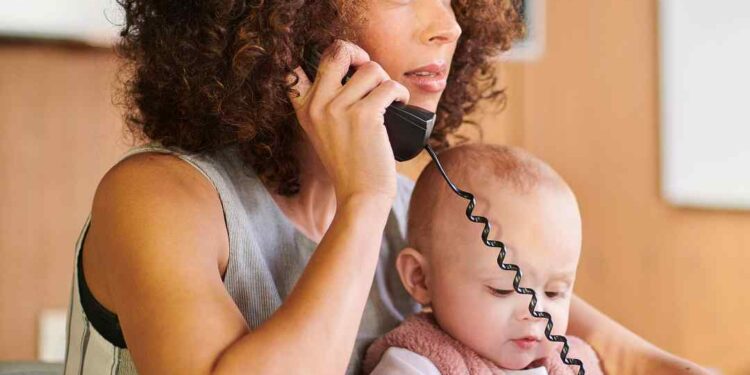Guest Post by Sam Newman
Maternity holds women back and discourages them from changing employer in order to progress their career.
Enhanced Maternity Pay – Golden Handcuffs?
The rules some employers impose around enhanced maternity pay – and having to repay it if you do not work enough days/hours on your return – can mean that some women are effectively trapped with their employer from when they are trying to conceive until the end of the enhanced maternity pay tie-in period. Allowing 12 months for conception/pregnancy, 12 months maternity leave and 12 months tie-in, that’s a minimum of 3 years when a prospective mum cannot risk changing jobs, and it could easily be far more. This is not a situation a man has to factor in if he’s having a child with his partner; a man can change employer with impunity, with no risk to his income.
Even thinking about having a child has an impact on women’s choices
In the Summer of 2022, I spoke to a number of women who were thinking about having a first or subsequent child, and all of them were frustrated and felt blocked in their careers. They were successful and ambitious women, keen to progress, but moving jobs was simply too risky in a way that it wouldn’t be for their male counterparts if they were also contemplating a child.
The biggest issue is maternity pay – to qualify for Statutory Maternity Pay (SMP) you must have worked for your employer for at least 26 weeks. Many women rely on receiving some enhanced maternity pay, but there are often conditions attached to that by employers, and these can vary significantly. How can you risk changing jobs if you are trying to get pregnant, knowing you may not get enhanced pay? How can you know what you might get?
Mother Nature is Unpredictable
For the vast majority of women trying for a baby, it simply isn’t possible to control when you conceive. It may happen immediately, but for some women it can take months, years, or never happen at all.
One woman I spoke to had recently applied successfully for a role that would have given her good career progression. Unfortunately, having spent significant time and energy on the interview process, she had little option but to decline the offer on receipt of the terms of the contract. Enhanced maternity pay was only available once the employee had completed 2½ years of service! She could not manage financially on SMP alone, and was not prepared to delay trying to start a family for that length of time. This is not a choice a man would have to make if considering having a child with his partner.
What can be done to make things fairer?
There are two obvious things:
1. Offer enhanced maternity pay regardless of length of service. If you hire someone, you want them to work for you! Imposing an arbitrary 26 week period before enhanced pay applies not only disadvantages women, it stops them from applying. More companies should follow examples such as Vodafone, Aviva and TFL, who offer enhanced maternity pay regardless of length of service.
2. Be clear about your maternity pay policy in your recruitment information. No woman should be forced to ask how long they have to work before enhanced pay applies (if, indeed, it does) because this is not a question a man would need to ask. No woman should be allowed to waste their time going through a recruitment process only to find that she has to work for a minimum period before becoming pregnant. Information on maternity pay should be clear up front.
These are just two simple steps any employer could make, which would make a lot of difference to women and make the workplace fairer.
 Sam is Director of Light The Spark Limited. Prior to starting her consultancy business, Sam worked at Hiscox Insurance for 10 years, where she also headed the Women at Hiscox network in the UK, championing women and helping them further their careers. Sam is known in the insurance industry as an outspoken campaigner to highlight the challenges women still face in their careers and is going to be judging the insurance category at the We Are The City Rising Star awards this year.
Sam is Director of Light The Spark Limited. Prior to starting her consultancy business, Sam worked at Hiscox Insurance for 10 years, where she also headed the Women at Hiscox network in the UK, championing women and helping them further their careers. Sam is known in the insurance industry as an outspoken campaigner to highlight the challenges women still face in their careers and is going to be judging the insurance category at the We Are The City Rising Star awards this year.
You can contact Sam at sam@lightthespark.co.uk or on LinkedIn.










